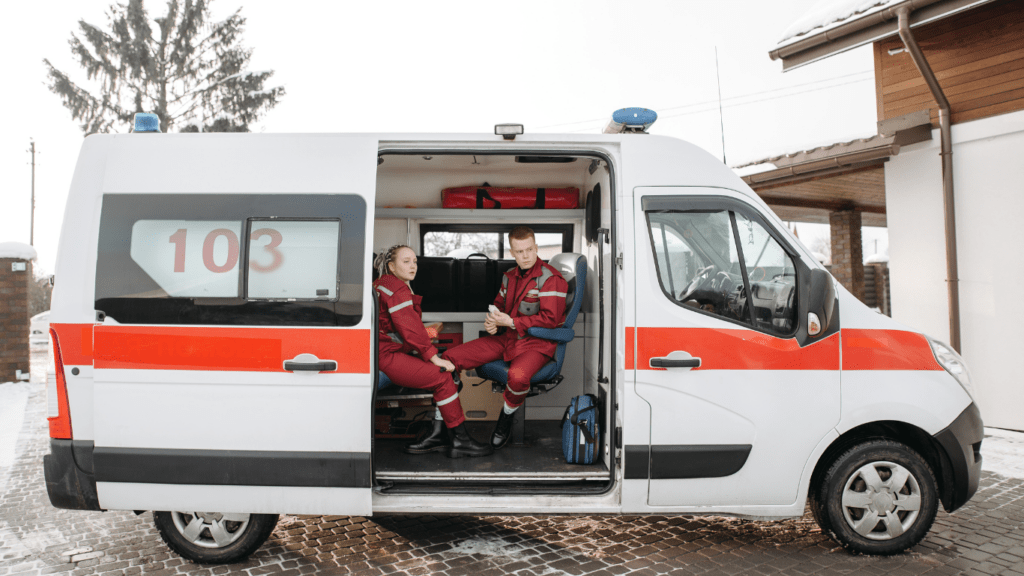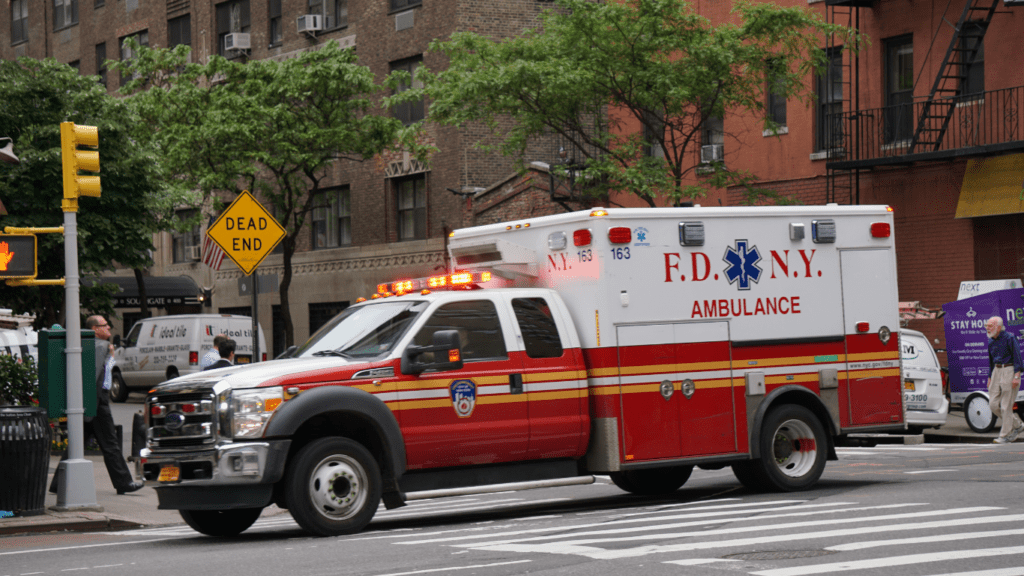Venturing into the wilderness can be a thrilling experience, but it comes with its own set of challenges, especially when it comes to handling emergencies in remote camping locations. As an avid camper myself, I understand the importance of being prepared for the unexpected when miles away from civilization.
In this article, I’ll share essential tips and strategies on how to stay safe and handle emergencies effectively while camping in remote areas. From first aid essentials to communication devices, I’ll cover everything you need to know to ensure a safe and enjoyable outdoor adventure.
Whether you’re a seasoned outdoor enthusiast or a novice camper, being equipped with the right knowledge and tools can make all the difference in a crisis situation. Join me as we explore the best practices for handling emergencies in remote camping locations.
Importance of Being Prepared in Remote Camping
Ensuring preparedness when heading to remote camping locations is crucial for a safe and enjoyable adventure. As an experienced camper, I understand the significance of having the right tools and knowledge to handle emergencies effectively in wilderness settings.
Key factors contribute to the importance of being prepared in remote camping situations:
- Safety: Prioritizing safety by carrying essential gear such as first aid kits, communication devices, and navigation tools can prevent and mitigate potential risks during outdoor expeditions.
- Self-Reliance: Being self-reliant in remote areas is essential as immediate help may not be readily available. Having the necessary skills and equipment empowers campers to address emergencies independently.
- Timely Response: Quick and appropriate responses to emergencies are vital in remote camping locations where access to medical facilities or emergency services is limited. Preparedness facilitates timely intervention and can be life-saving.
- Peace of Mind: Being well-prepared instills confidence and peace of mind, enhancing the overall camping experience. Knowing that you are equipped to handle unforeseen circumstances allows you to fully immerse yourself in nature without constant worry.
- Risk Management: Anticipating potential risks and preparing accordingly minimizes the likelihood of emergencies escalating into severe situations. Carrying out risk assessments and preparing contingency plans are essential components of remote camping readiness.
Maintaining preparedness through proper planning, training, and equipment selection is fundamental to ensuring a safe and enjoyable camping experience in remote locations. By acknowledging the importance of being prepared, campers can embark on their outdoor adventures with confidence and readiness for any situation that may arise.
Common Emergencies in Remote Camping
When camping in remote locations, being aware of common emergencies can help me stay prepared for unexpected situations. Here are some typical emergencies that may arise:
Sudden Illnesses
Dealing with sudden illnesses in remote camping areas can be challenging. It’s essential to recognize symptoms promptly and act accordingly. Common sudden illnesses include:
- Food poisoning: Symptoms such as nausea, vomiting, and diarrhea can quickly escalate in a camping environment.
- Heat exhaustion: High temperatures combined with physical exertion can lead to heat-related illnesses like heat exhaustion, causing symptoms like dizziness, fatigue, and excessive sweating.
Injuries
Injuries are a common occurrence in outdoor activities, and being prepared to handle them is crucial for a safe camping experience. Common injuries that campers might encounter include:
- Sprains and strains: Twisting an ankle or overexerting muscles can result in sprains and strains, requiring immediate care to prevent further complications.
- Cuts and wounds: Accidents while hiking or handling camping equipment can lead to cuts and wounds that need proper cleaning and bandaging to avoid infection.
By understanding these common emergencies and how to address them, I can ensure a safer camping experience and be better equipped to handle unexpected situations while enjoying the great outdoors.
Essential Emergency Preparedness Gear
When preparing for camping in remote locations, having the right gear can make a significant difference in handling emergencies effectively. Here are essential items to include in your emergency preparedness kit:
- First Aid Kit: A well-stocked first aid kit is vital for treating minor injuries such as cuts, scrapes, and burns. It should contain bandages, antiseptic wipes, pain relievers, and other essential medical supplies.
- Emergency Shelter: Carry a lightweight, compact emergency shelter like a tent or a reflective blanket to provide protection from the elements in case you need to stay outdoors longer than planned.
- Emergency Communication Device: In areas with limited cell service, an emergency communication device such as a satellite phone or a personal locator beacon can be a lifesaver in calling for help.
- Headlamp or Flashlight: A reliable headlamp or flashlight with extra batteries is crucial for navigating in the dark or signaling for assistance during nighttime emergencies.
- Multi-Tool Knife: A versatile multi-tool knife can come in handy for various tasks, from cutting branches for a shelter to fixing gear or preparing food.
- Fire Starter: Pack waterproof matches, a lighter, or a fire starter kit to quickly build a fire for warmth, cooking, or signaling rescuers.
- Water Filtration System: In emergencies where clean water is scarce, a portable water filtration system or water purification tablets can ensure a safe drinking supply.
- Emergency Whistle: An emergency whistle can be a simple yet effective tool to alert others of your location in case you need help.
- Extra Food and Water: Always carry extra rations of non-perishable food and water to sustain yourself in case of an emergency or unexpected delay.
By including these essential items in your emergency preparedness gear, you can enhance your safety and readiness for any unexpected situations that may arise during your remote camping adventures.
First Aid Techniques for Remote Camping Emergencies
In remote camping locations, being prepared to handle emergencies is crucial. Along with having the right gear, knowledge of first aid techniques can make a significant difference in managing unexpected situations. Here are some essential first aid techniques for remote camping emergencies:
Treating Minor Cuts and Scrapes
- Clean the wound with antiseptic wipes.
- Apply an antibiotic ointment.
- Cover the cut or scrape with a bandage.
Managing Sprains and Strains
- Rest the affected limb.
- Use a cold compress to reduce swelling.
- Elevate the injured area.
Dealing with Burns
- Rinse the burn with cool water.
- Apply a sterile gauze bandage.
- Do not break any blisters that may have formed.
Handling Insect Bites and Stings
- Remove the stinger if present.
- Clean the area with soap and water.
- Apply a cold pack to reduce swelling and itching.
Addressing Heat Exhaustion
- Move the person to a cooler area.
- Have them drink cool water.
- Loosen tight clothing and apply cold compresses.
Managing Hypothermia
- Remove wet clothing.
- Wrap the person in warm, dry blankets.
- Provide warm beverages if conscious.
Assisting with Dehydration
- Encourage the person to drink small sips of water.
- Use oral rehydration solutions if available.
- Seek medical help if dehydration is severe.
- Administer an EpiPen if available.
- Call emergency services immediately.
- Keep the individual calm and monitor their breathing.
Being equipped with the knowledge of these first aid techniques can help you effectively respond to emergencies while remote camping. Remember, quick and appropriate action can make a significant difference in the outcome of a wilderness emergency.



 Karencita Oboyler brings her creative flair and deep appreciation for the natural world to her role at Terra Tactician Tactics. With a background in digital marketing and content strategy, Karencita is dedicated to crafting engaging and visually appealing articles that captivate the platform's diverse audience. Her work focuses on highlighting unique outdoor destinations, offering practical travel advice, and showcasing the beauty of nature through stunning photography and storytelling. Karencita's ability to blend creativity with valuable information has helped Terra Tactician Tactics stand out as a dynamic and compelling resource for outdoor enthusiasts.
Beyond her content contributions, Karencita is passionate about building a vibrant community around the platform. She is committed to fostering an inclusive space where everyone, from seasoned adventurers to curious beginners, feels welcomed and inspired to explore the great outdoors. Her innovative ideas and strategic approach to content development have been instrumental in expanding Terra Tactician Tactics' reach and impact. Karencita's enthusiasm for the project is matched only by her love for nature, making her an integral part of the team and its continued success.
Karencita Oboyler brings her creative flair and deep appreciation for the natural world to her role at Terra Tactician Tactics. With a background in digital marketing and content strategy, Karencita is dedicated to crafting engaging and visually appealing articles that captivate the platform's diverse audience. Her work focuses on highlighting unique outdoor destinations, offering practical travel advice, and showcasing the beauty of nature through stunning photography and storytelling. Karencita's ability to blend creativity with valuable information has helped Terra Tactician Tactics stand out as a dynamic and compelling resource for outdoor enthusiasts.
Beyond her content contributions, Karencita is passionate about building a vibrant community around the platform. She is committed to fostering an inclusive space where everyone, from seasoned adventurers to curious beginners, feels welcomed and inspired to explore the great outdoors. Her innovative ideas and strategic approach to content development have been instrumental in expanding Terra Tactician Tactics' reach and impact. Karencita's enthusiasm for the project is matched only by her love for nature, making her an integral part of the team and its continued success.